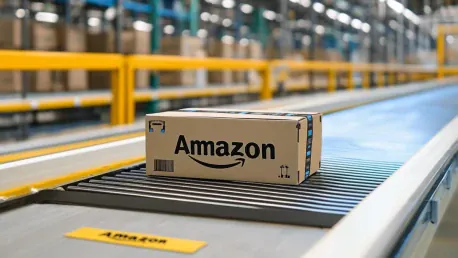As competition intensifies within the e-commerce sector, Amazon has been relentlessly refining its methods to enhance user experience and broaden product access. The latest development in this endeavor is Amazon’s introduction of a new search feature currently in beta. This innovative function allows customers to find products that the online retail giant does not sell directly, redirecting them to the respective brand’s website. Early insights suggest that this feature is exclusive to a specific subset of U.S. users on the Amazon Shopping app for iOS and Android. The question now stands: Is this new feature genuinely enhancing the customer experience?
Introducing the Beta Search Feature
Expanded Product Listings
Incorporating a new “See More” button within its search results, Amazon enables users to view additional listings from specific brands directly on their platform. Users benefit from an expanded selection of products due to a simple tap of this button. One compelling aspect of this feature is its ability to notify users when a particular item is not sold on Amazon. Instead of ending the search journey there, the user is redirected seamlessly to the brand’s own website for purchase. This transition can lead to greater consumer satisfaction by reducing the frustration of not finding wanted items.
Through this beta test, Amazon retains its core function as a comprehensive product search engine rather than just a marketplace. An exciting aspect of this addition is the potential offering of the “Buy with Prime” feature by some brands. This feature allows customers to enjoy Prime delivery benefits even when purchasing directly from a brand’s website. The combination of extensive product discovery and the convenience of Prime’s swift delivery service promises not only to enhance liquidity but also to maintain Amazon’s reputation for convenience and customer satisfaction.
Why the New Search Feature Matters
The implementation aligns seamlessly with Amazon’s broader strategy to enhance its search functionality—an area the company has continuously improved over the years. Previous efforts have included the incorporation of visual and generative AI, intended to make search results more relevant and user-friendly. The redesign of Amazon’s Rufus shopping assistant tool is a case in point; it resulted in a 5% increase in customer satisfaction. Meanwhile, in the past year alone, Amazon has added five visual search features, fortifying the overall shopping experience for diverse users.
By expanding their search capabilities, Amazon successfully addresses one significant pain point for shoppers: the time-consuming and often frustrating endeavor of finding a specific product. Whether users are seeking premium brands or budget-friendly options, the new search feature intends to cater to multiple segments of the consumer market. This function might become a game-changer in the way consumers interact with Amazon’s platform, setting new standards for what efficient online searches should look like.
Diversifying the Retail Ecosystem
High-End and Budget Options
To cater to a broad audience, Amazon has been adding an array of both high-end and budget-friendly options over recent years. By introducing new brands like Estée Lauder, Oura Rings, Dolce & Gabbana Beauty, and Kate Spade New York, Amazon has substantially enriched its catalog with premium choices. These new entries resonate well with customers looking for luxury products. On the other hand, Amazon has also introduced Amazon Haul, targeting shoppers interested in products under $20. This dual approach ensures that Amazon meets the needs of a wide range of consumers without alienating any particular demographic.
This diversification is central to Amazon’s strategy. By positioning itself as a versatile platform that offers products at both ends of the price spectrum, Amazon strengthens its competitive edge in the crowded e-commerce market. Shoppers can now discover high-end brands and affordable alternatives in one place, simplifying their shopping experience and saving precious time. As Amazon doubles down on this strategy, the new search feature not only broadens its product catalog but also integrates a complementary system ensuring users find exactly what they’re looking for without leaving the platform.
The Role of AI in Optimizing Searches
Amazon’s foray into enhancing its search features is part of a larger trend within retail to use AI for better product search and personalization. Competitors like Google, Wayfair, ThredUp, and Walmart have all incorporated AI-driven solutions, such as imagery analysis, personalized homepages, curated product recommendations, and chatbots. These technologies aim to predict and cater to individual consumer preferences, improving the overall user experience.
Amazon’s continuous enhancements in AI-driven search technology suggest a focus on staying ahead of industry trends and maintaining its leadership position. By leveraging visual AI features and generative models, Amazon not only improves the accuracy and relevance of search results but also anticipates customer needs better than ever. This strategic use of AI ensures that Amazon remains a pioneer in retail technology, offering a smooth and intuitive shopping experience that keeps customers coming back for more.
Future Considerations
As the e-commerce sector becomes increasingly competitive, Amazon continuously hones its strategies to improve user experience and expand product availability. The latest effort in this ongoing evolution is the introduction of a new search feature, now in its beta phase. This novel functionality empowers customers to locate products not directly sold by Amazon, instead redirecting them to the corresponding brand’s website. Initial reports indicate that this feature is limited to a particular group of U.S. users on the Amazon Shopping app for iOS and Android devices. While this innovation aims to broaden customer access and diversify the platform’s offerings, the crucial question remains: Is this new feature tangibly enhancing the customer experience or merely adding another layer of complexity? The answer to this question will be pivotal in determining the success of Amazon’s latest endeavor in maintaining its leadership in the competitive e-commerce landscape.









